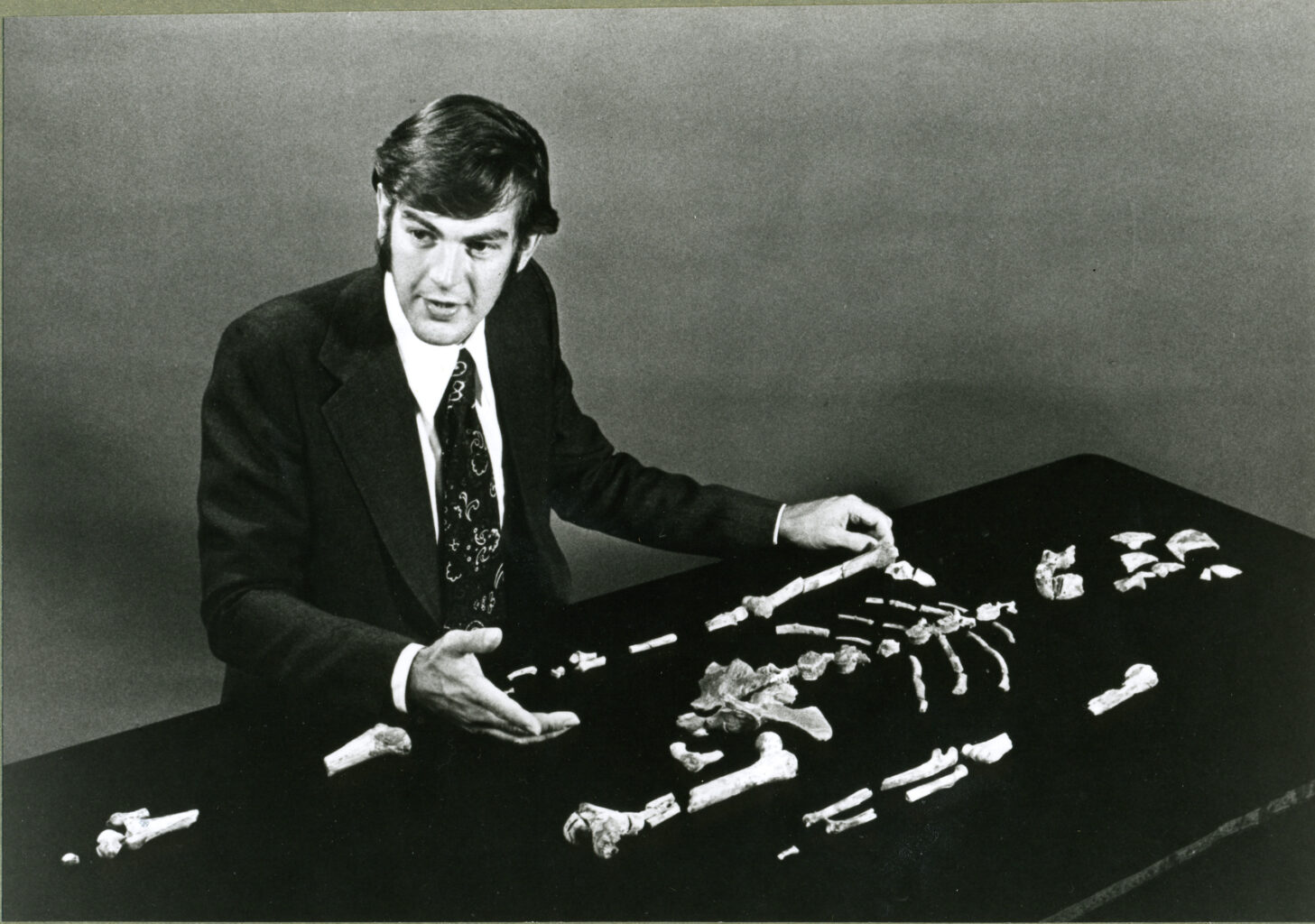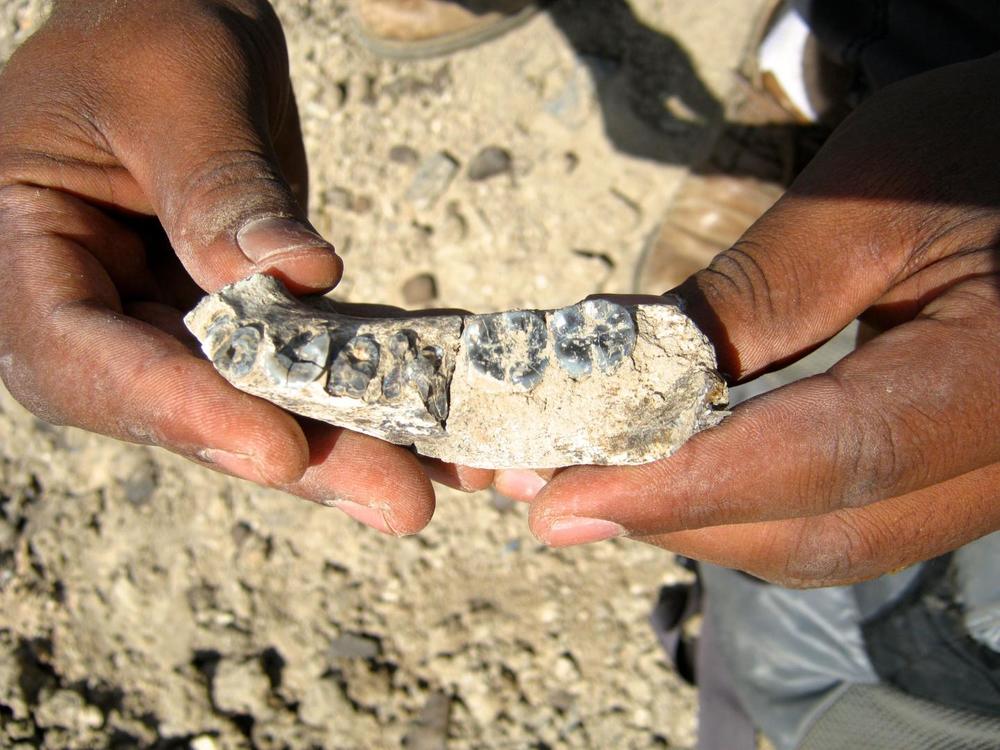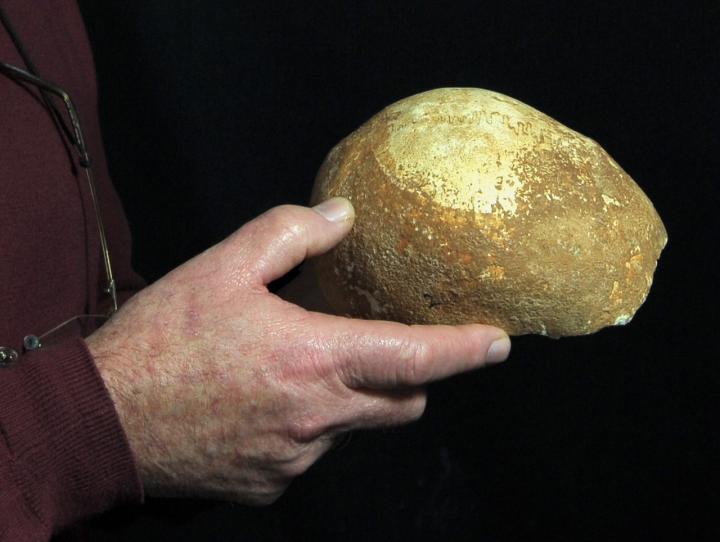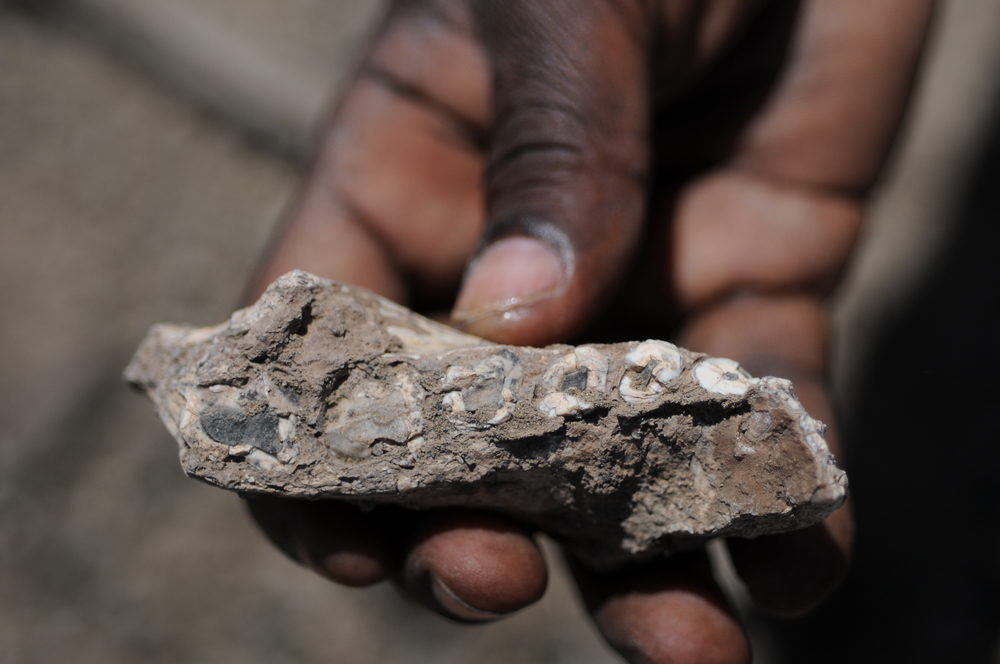Discovering Us | In the News

Fifty years since the discovery of Lucy, what does this iconic fossil tell us about our evolutionary story?
By Evan Hadingham
Author of Discovering Us
What marked out our ancestors from other early apes and set them on the evolutionary path to becoming Homo sapiens? At the start of the 20th century, many assumed that intelligence and a big brain were the answer and that these crucial advantages emerged at a very early date, before upright walking. But a very different picture began to emerge in 1924 with the first fossil finds of small-brained, upright walkers known as australopithecines in South Africa’s limestone caves. It was not until the discovery of the famous Lucy skeleton in 1974 that a complete enough fossil showed what one of those early ancestors, over 3 million years ago, was really like.
The find of a lifetime
Donald Johanson and graduate student Tom Gray were on a morning scouting trip in the badlands of Hadar, Ethiopia, on November 24, 1974, when the glint of a fossil fragment caught Johanson’s eye. Scouting the area, they noticed more fragments.
They carefully collected a few of the fossils and returned to show the others at the research camp. That night, celebrating their success back in camp, the team christened their new fossil, inspired by the Beatles’ Lucy in the Sky with Diamonds that was playing in the background. Over the next several weeks, Johanson and the team recovered over a third of the skeleton, including parts of the skull, rib cage, pelvis, and limb bones, which would turn out to be more than 3 million years old. The story of her discovery transformed Lucy into a popular icon. “At that time,” says Johanson, “it was the oldest, most complete skeleton of a human ancestor. People could visualize an individual when they looked at her.”
The most famous of her species
Subsequent discoveries have amply justified her celebrity. Over the last five decades, scientists found more fossils of Lucy’s species, Australopithecus afarensis, than of any other ancient fossil ancestor. From Hadar alone, researchers have identified over 400 specimens, representing more than 90% of her anatomy. Her species endured in East Africa for at least 800,000 years, nearly three times longer than the timespan of our own species, Homo sapiens. Moreover, A. afarensis was only one of at least eight other species of australopiths (or australopithecines) that left fossil traces across a vast area, from the desert badlands of Ethiopia to the limestone caves of South Africa.
Each one represented a distinctive survival solution to particular habitats and changing climates; some overlapped with each other, and others were still thriving when early Homo was foraging on the East African grasslands. But it is A. afarensis that has commanded attention as the australopith most widely thought to have given rise to our own species, even though there is no proof of a direct connection.
What sort of creature was Lucy?
Despite Lucy’s fame and the prolific finds from Hadar and elsewhere, many unresolved questions persist. What sort of a creature was she? Anyone expecting Lucy’s brain to be expansive was disappointed. It was grapefruit-sized, similar to a chimpanzee’s. She was a little over three feet tall and weighed around 60 pounds, also comparable to a chimp. Her other ape-like features included a snout-like, projecting face and brow ridges, relatively short legs, and powerful, long arms with slightly curving fingers, which made her well-adapted for tree climbing. Spending time in the trees was probably still crucial to the survival of these vulnerable apes, enabling them to find fruit, escape predators, and sleep through the night in relative safety.
A walk through the past
Yet much of Lucy’s anatomy shows her to have been a committed upright walker. Instead of an ape-like grasping toe and flexible foot suited for tree climbing, Lucy’s stiff foot with its partial arch largely resembled our own, including her big toe that lined up with all the others. As a result, her foot could propel her body forward and upward at the end of each springy step. Another striking departure from the apes was Lucy’s shorter, wider pelvis, which allowed her muscles to control and balance her body as she took one step after another. While some of these adaptations may have been a handicap in the trees, Lucy’s style of walking was an effective formula for crossing open landscapes, perhaps twice as efficient as chimpanzees’ habitual knuckle-walking or occasional, upright shuffling gait.
The latest evidence suggests that walking began long before Lucy and the australopiths. It may have started as early as 7 million years ago, since the structure of Toumaï’s fossil skull indicates that it was almost certainly connected to an upright spine. Back then, our ancestors were living in a partly forested environment. Over the next few million years, despite periodic rapid climate swings, there was an overall trend toward a cooler, drier East Africa. This shift in the environment would have affected the distribution of fruit trees, which are the preferred food source of most primates today. During cooler phases, the trees were more spread out across the landscape, putting pressure on them to travel farther and more efficiently to forage and survive. Paleoanthropologist Dan Lieberman concludes that “bipedalism was probably an expedient adaptation for fruit-loving apes to survive better in more open habitats as Africa’s climate cooled.”
A resilient species
Clear evidence of Lucy’s species’ resilience lies in the layers of the Hadar site where she was found, which span some 400,000 years of time. Throughout this era, woodlands supported by high rainfall and mild temperatures alternated with cooler, more arid episodes that favored open grasslands. Despite these shifting conditions, fossil evidence shows that the anatomy of A. afarensis remained essentially unchanged, suggesting that they were capable of thriving in very different landscapes.
More tantalizing clues emerge from their outsized jaws and cheek teeth, which are more massive than anything seen in living apes today. Covered in thick enamel and resembling grindstones, the flat molars of some specimens were twice as big as a chimpanzee’s. At first, this rugged anatomy suggested that A. afarensis had specialized in crushing tough and abrasive foods like nuts, seeds, and tubers, rather than the soft fruits that most apes prefer whenever they are available.
Diet and survival
One explanation points to the theory of “fallback foods,” the idea that in times of drought when fruit was scarce, australopiths would have a survival advantage if they could draw on a wider menu than other primates. Yet subsequent microscope studies of the wear patterns on A. afarensis teeth did not reveal the pits and craters expected if they had indeed specialized in grinding up hard, brittle foods. Instead, the microscope showed mostly long, wispy scratches, more typical of chewing tropical grasses, sedges, and leaves. A follow-up study of the carbon isotopes in her teeth confirmed these results, revealing a signature typical of grass and sedge chewers. The paradox remains unresolved, but most experts conclude that australopiths were, in all likelihood omnivores, able to draw expediently on a wide variety of foods, including scavenged or hunted meat, as different opportunities, natural settings, and climate conditions allowed.

Looking back on Lucy
For Donald Johanson, looking back on 50 years of Lucy scholarship and popular renown, she still occupies a special place, “a pivotal point on the human family tree, between older ancestors that are very apelike and more modern, more derived, ancestors, and appears to be the last common ancestor for all the later branches on the human family tree.”With the australopiths, our ancestors’ earlier experiments in upright walking and dietary resourcefulness were taken to a new level, and would be developed still further by their Homo successors.
According to anthropologist Carol Ward, the crucial advantages of Lucy’s species were “their unique way of moving on the ground and their ability to make a meal out of most anything they ran across. This gave them the edge over apes that made the difference in the long run, setting the stage for the arrival and evolution of Homo.”
This story by Evan Hadingham is from the book Discovering Us: Fifty Great Discoveries in Human Origins. Find the book at your local bookstore and listen to the Discovering Us podcast with Ashley Judd.


